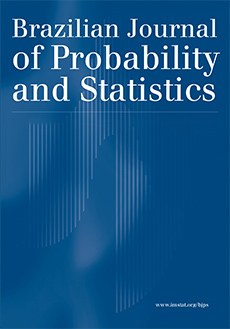Abstract
In many practical situations, we face data which are not only random but vague as well. To deal with these two types of uncertainties, it is necessary to incorporate fuzzy concept into statistical technique. In this paper, we investigate the maximum likelihood estimation and Bayesian estimation for Lindley distribution when the available observations are reported in the form of fuzzy data. We employ the EM algorithm to determine the maximum likelihood estimate (MLE) of the parameter and construct approximate confidence interval by using the asymptotic normality of the MLE. In the Bayesian setting, we use an approximation based on the Laplace approximation as well as a Markov Chain Monte Carlo technique to compute the Bayes estimate of the parameter. In addition, the highest posterior density credible interval of the unknown parameter is obtained. Extensive simulations are performed to compare the performances of the different proposed methods.
Citation
Abbas Pak. "Statistical inference for the parameter of Lindley distribution based on fuzzy data." Braz. J. Probab. Stat. 31 (3) 502 - 515, August 2017. https://doi.org/10.1214/16-BJPS321
Information





